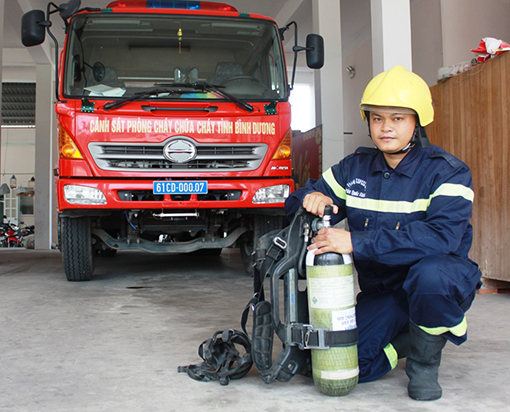Regulations on the Regular Maintenance and Upkeep of Fire Extinguishers
This is the notable content in Circular 52/2014/TT-BCA regarding the management, preservation, and maintenance of fire prevention and fighting equipment.

Regulation on regular maintenance and preservation of fire extinguishers (Illustrative image)
To be specific, Circular 52/2014/TT-BCA regulates 05 types of fire extinguishers as follows: Type 1: Extinguishers with direct-pressurized water, water with additives, or foam; Type 2: Extinguishers with direct-pressurized powder; Type 3: Extinguishers using push gas canisters with water or water with additives; Type 4: Extinguishers using push gas canisters with powder; Type 5: Carbon dioxide fire extinguishers. The regulation on regular maintenance and preservation of fire extinguishers is as follows:
For Types 1, 2, 3, 4, and 5 extinguishers, specifically:
- Inspect the exterior of the cylinder to check for rust. If the cylinder has minor rust, it should be maintained for continued use; if the cylinder is heavily rusted, corroded, it should be discarded;
- Weigh the extinguisher (with or without the operational mechanism following the manufacturer’s instructions) or use an appropriate method to check the exact weight of the extinguishing agent. Compare the weight recorded with the weight noted when the extinguisher was first put into use;
- Inspect the nozzle and spray hose and clean thoroughly; replace if damaged;
- Inspect pressure gauges. If the pressure decreases by more than 10% or more compared to the maximum allowable reduction per the manufacturer's instructions, follow the manufacturer's instructions;
- Inspect the operational mechanism and the discharge control (if installed) for extinguishers designed with removable operational mechanisms per the manufacturer’s instructions;
For Types 3 and 4 extinguishers:
- Clean the interior and exterior of the extinguisher; check the cylinder inside and outside for corrosion and damage. If there is minor corrosion or insignificant damage, maintain for continued use; if there is significant corrosion, discard;
- Open the extinguisher or dismantle fittings to inspect the quality of the cylinder;
- Inspect the exterior of the push gas canister for signs of corrosion and damage. If the canister is corroded or damaged, replace it. Weigh the canister and check the weight against the labeled weight. If the canister contains less than the minimum labeled weight or is found to be leaking, repair, refuel, or replace with a new one;
- Refill the extinguisher to its initial level (Type 3), compensating for any lost water. For water with additives or foam solutions, refill per the manufacturer’s instructions. Inspect and clean the nozzle branch, filter screen, and spray tube inside the gas release valve (if installed);
- Check the powder in the extinguisher (Type 4); specifically: Shake and invert the cylinder to mix the powder. If there are signs of caking or clumping that prevent spraying, replace all the extinguishing powder and refill with the manufacturer's powder. Inspect, adjust, and clean the nozzle, spray hose, and discharge tube;
- Inspect gaskets, diaphragms, and spray hoses; replace if damaged;
- Reassemble the extinguisher per the manufacturer's instructions.
For Type 5 extinguishers:
- Inspect and clean the extinguisher horn, nozzle; replace if damaged;
- Perform an electrical conductivity test on the fire hose assembly.
For further details, refer to Circular 52/2014/TT-BCA effective from December 25, 2014.
Ty Na
- Cases of revocation of certificate of vehicle and license plate registration for motorized vehicles and heavy-duty vehicles in road traffic in Vietnam from January 1, 2025
- 08 Rights of Social insurance beneficiaries in Vietnam from July 1, 2025
- Ministry of Health's response to the petition regarding overload condition at central-level hospitals in Vietnam
- Regulations on Study Time for Primary School Students in Ho Chi Minh City for the 2024-2025 School Year
- State Policy on Road Traffic Order and Safety from 2025
- Regulations on the System of National Defense Industrial Bases
-

- Newest regulation on procedures for the issuance ...
- 15:00, 01/09/2024
-

- Cases of revocation of certificate of vehicle ...
- 14:00, 01/09/2024
-

- Cases of registration of security interests in ...
- 13:00, 01/09/2024
-

- 08 Rights of Social insurance beneficiaries in ...
- 12:00, 01/09/2024
-

- Procedures for provision of land-related information ...
- 11:01, 01/09/2024
 Article table of contents
Article table of contents
